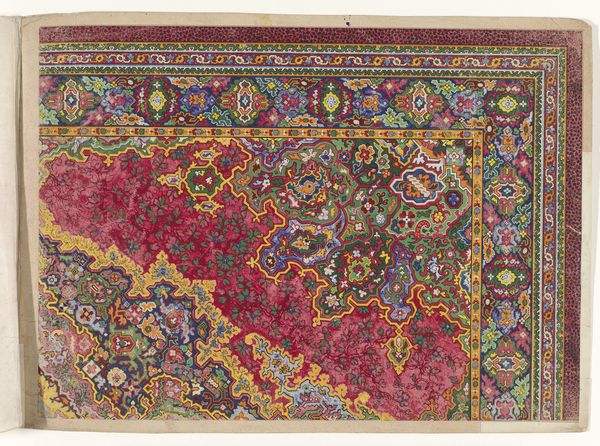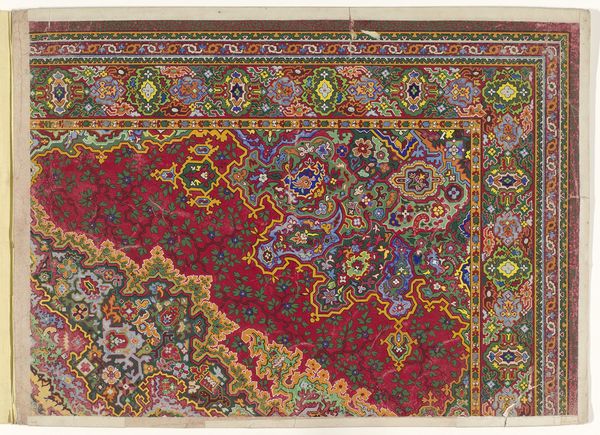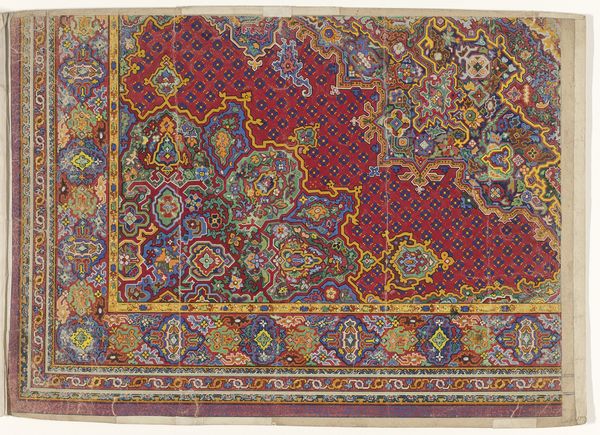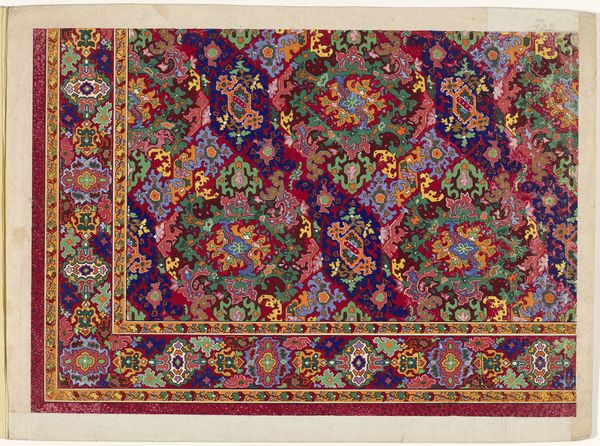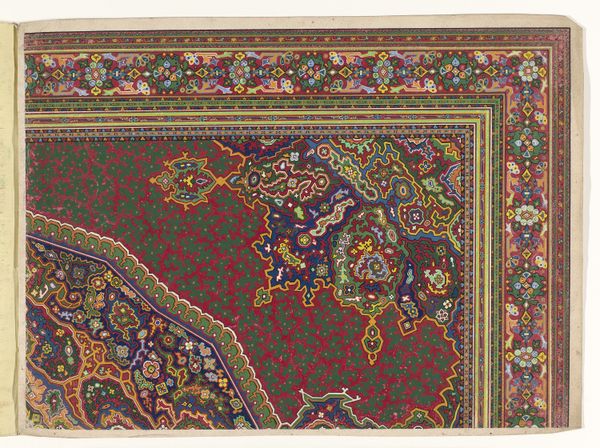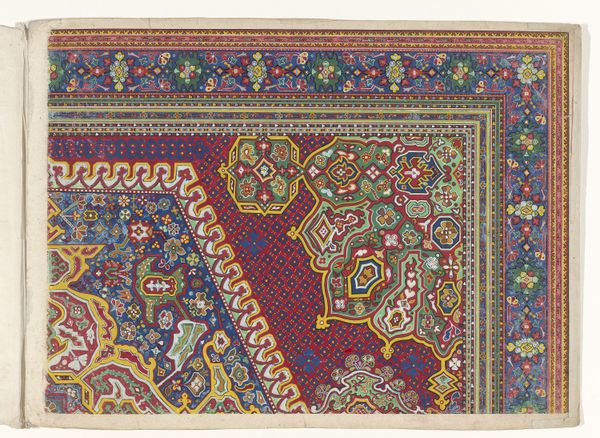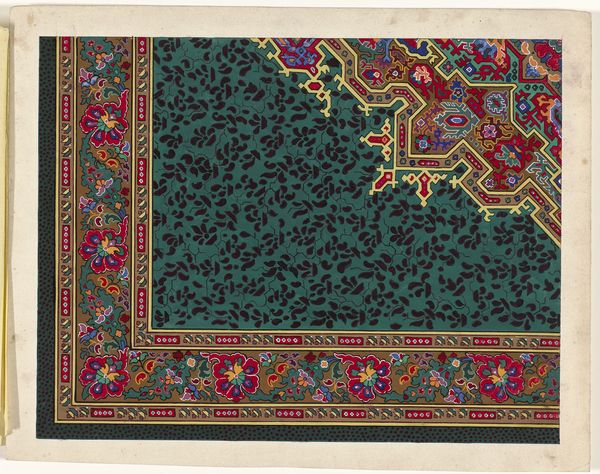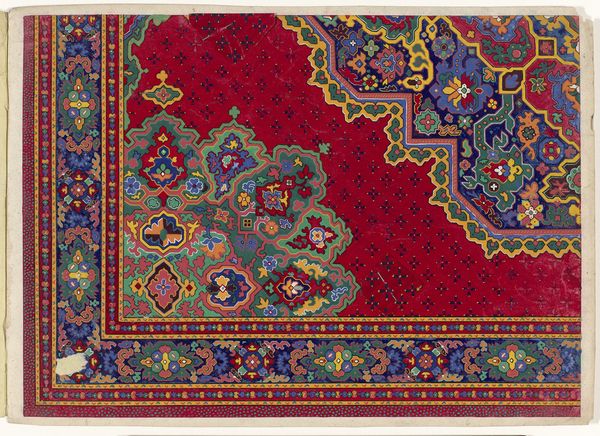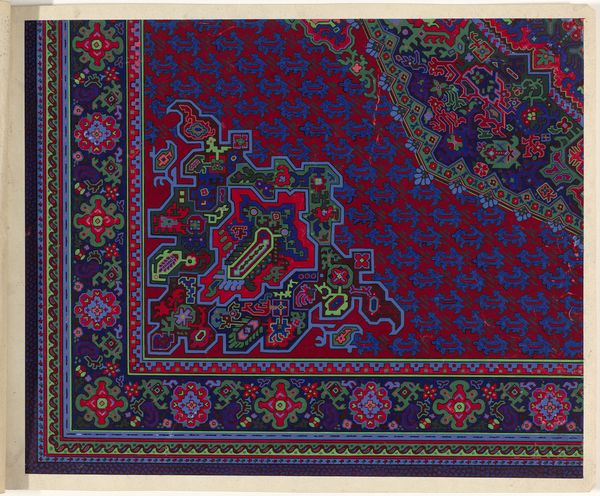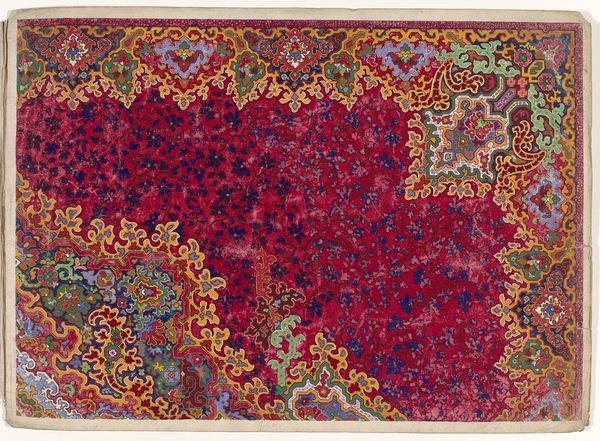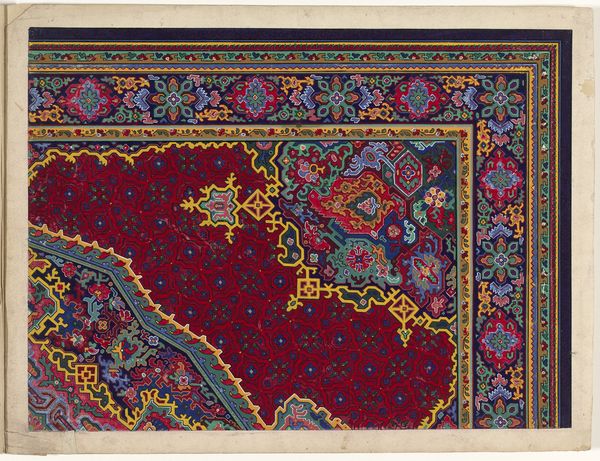
drawing, textile, paper
#
pattern-and-decoration
#
drawing
#
organic
#
textile
#
paper
#
geometric pattern
#
organic pattern
#
geometric
#
decorative-art
Dimensions: height 400 mm, width 297 mm
Copyright: Rijks Museum: Open Domain
Editor: So, here we have "Ontwerp voor een tapijt," or "Design for a Carpet," dating from roughly 1854 to 1864. It's a drawing intended for textile production, showcasing geometric and organic patterns. It's incredibly vibrant. The repeating patterns are so dense! What do you make of it? Curator: Well, immediately, the orientalist style grabs my attention. In the mid-19th century, there was a widespread fascination with "the Orient" in Western Europe. We see this manifest in decorative arts quite powerfully, driven by increased trade and colonial expansion. Consider the socio-political climate; how do you think this romanticized view impacted the production and reception of art like this? Editor: That’s interesting. I hadn't considered the colonial context so directly. So, this wasn’t necessarily about representing reality, but about creating a fantasy? Curator: Precisely! And the idea of design itself was shifting. It wasn’t enough to just produce goods; the *design* became a selling point. Pieces like this design for a carpet reflects evolving social ideas. Think of it as a stage, reflecting not necessarily truth, but public desires and consumerist possibilities. Editor: The "pattern and decoration" art movement tag makes more sense to me now – it’s about more than just prettiness. Curator: Exactly! We need to see the visual vocabulary that reflects certain ideas about social status and cultural identity, a status symbol represented through pattern. It represents, perhaps, a distorted and constructed idea of status for its consumers. What would a drawing like this have meant in, say, a bourgeois Parisian home? Editor: So, on one hand, a symbol of exoticism and sophistication... while maybe obscuring the realities of its creation? It's strange how one object can hold so much history. Curator: Indeed! And analyzing art through this historical lens provides a fuller appreciation of its cultural weight.
Comments
No comments
Be the first to comment and join the conversation on the ultimate creative platform.
